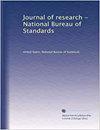Reactions of lithographic papers to variations in humidity and temperature
引用次数: 2
Abstract
In studies previously reported, information was obtained relative to causes of serious economic waste in offset lithography resulting from misregister in color printing. At the request of the Lithographic Technical Foundation, which is cooperating with the Bureau of Standards, further studies were made to obtain scientific data on the reactions of lithographic papers to variations in atmospheric humidity and temperature. Paper is a hygroscopic substance. Its moisture content is determined by the hygroscopic condition of the surrounding air, and its properties, particularly dimensional, are governed to considerable extent by moisture content. Since precise register requires constant dimensions, the influence of atmospheric changes was closely studied. The dimensions of the papers varied directly with the miosture content regardless of the cause of the moisture changes. Moisture content was influenced by relative humidity, temperature, and history of conditioning Humidity changes were most important. A 10-point change affected the moisture content sufficiently to alter the dimensions enough to cause serious misregister. Temperature effects were less important, but of sufficient magnitude to call for close control in printing. History of conditioning had an important influence on equilibrium moisture content, hence on dimensions. The paper that gave best register in printing had the lowest coefficient of expansion in the machine direction, and the paper that gave the largest misregister had the highest. The papers with low expansion in the machine direction have correspondingly high expansion in the cross direction, which indicates the desirability of large directional difference in fiber formation of offset papers. The low coefficient of expansion in machine direction for the papers giving best register, indicated that distortion in printing which affects register is caused largely by moisture content variations. The usual sizing materials had little influence on the moisture content response of paper to changing relative humidity except with respect to the rate of change. Both surface sizing and mineral coatings increased the total dimensional changes per unit of moisture content change. The effects of ordinary atmospheric changes on strength properties were not of sufficient magnitude to be of significance in lithography. CONTENTS Page平版印刷纸对湿度和温度变化的反应
在先前报道的研究中,获得了有关胶版印刷中由于彩色印刷中的套印错误而造成严重经济浪费的原因的信息。应与标准局合作的平版印刷技术基金会的要求,进行了进一步的研究,以获得关于平版印刷纸对大气湿度和温度变化的反应的科学数据。纸是一种吸湿性物质。它的水分含量是由周围空气的吸湿性决定的,它的性能,特别是尺寸,在很大程度上是由水分含量决定的。由于精确记录需要恒定的尺度,因此对大气变化的影响进行了密切研究。纸张的尺寸与水分含量直接相关,而与水分变化的原因无关。水分含量受相对湿度、温度和调理历史的影响,湿度变化最为重要。10个点的变化足以影响水分含量,足以改变尺寸,导致严重的错误记录。温度的影响不太重要,但其重要性足以要求在印刷时进行严密控制。条件作用的历史对平衡水分含量有重要影响,因此对尺寸也有重要影响。印刷时套印效果最好的纸张在机器方向上的膨胀系数最低,套印效果最差的纸张在机器方向上的膨胀系数最高。机械方向膨胀率低的纸张,其横向膨胀率也相应高,说明胶版纸纤维形成方向差异大是可取的。纸张在机器方向上的膨胀系数较低,可以获得最佳的套印效果,这表明印刷变形对套印效果的影响很大程度上是由水分含量的变化引起的。除相对湿度的变化率外,常用的施胶材料对纸张含水率对相对湿度变化的响应影响不大。表面施胶和矿物涂层都增加了每单位水分变化的总尺寸变化。普通大气变化对强度特性的影响在光刻中没有足够的意义。内容页面
本文章由计算机程序翻译,如有差异,请以英文原文为准。
求助全文
约1分钟内获得全文
求助全文

 求助内容:
求助内容: 应助结果提醒方式:
应助结果提醒方式:


